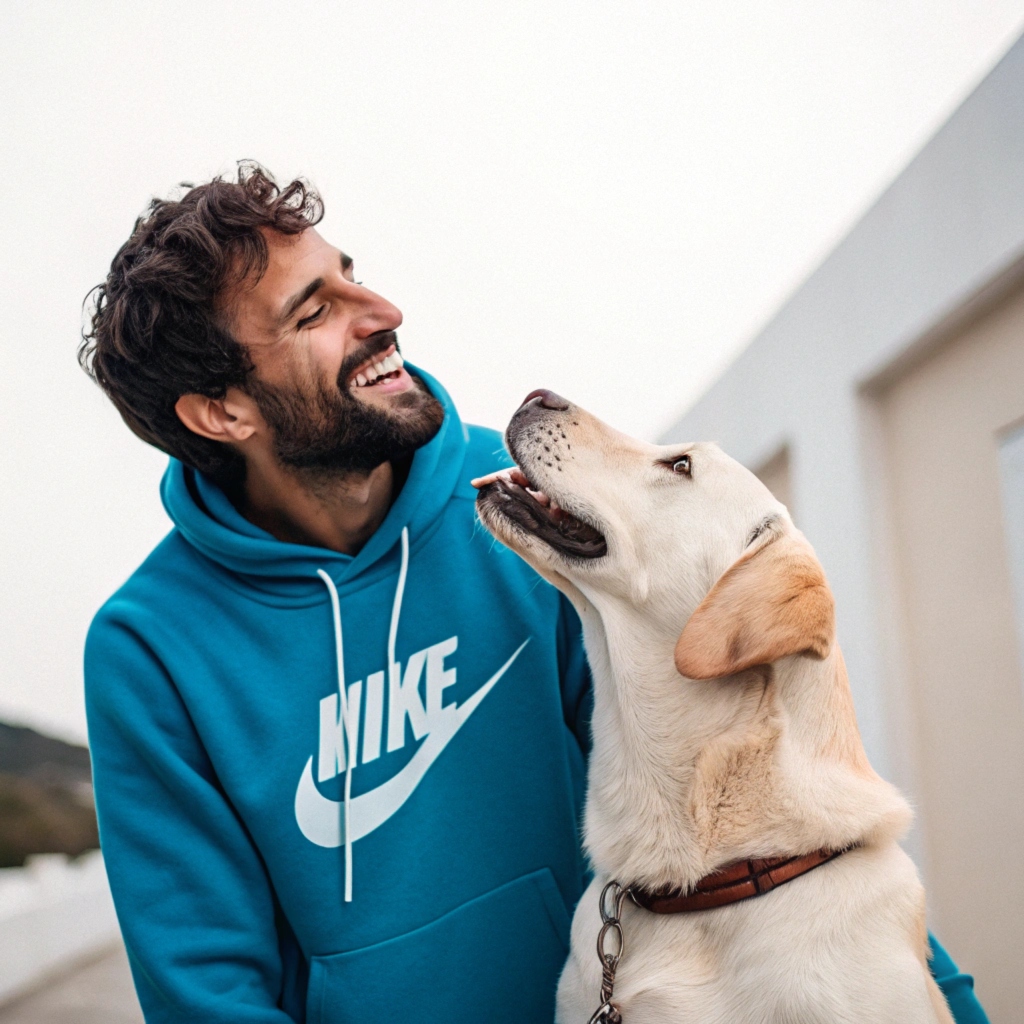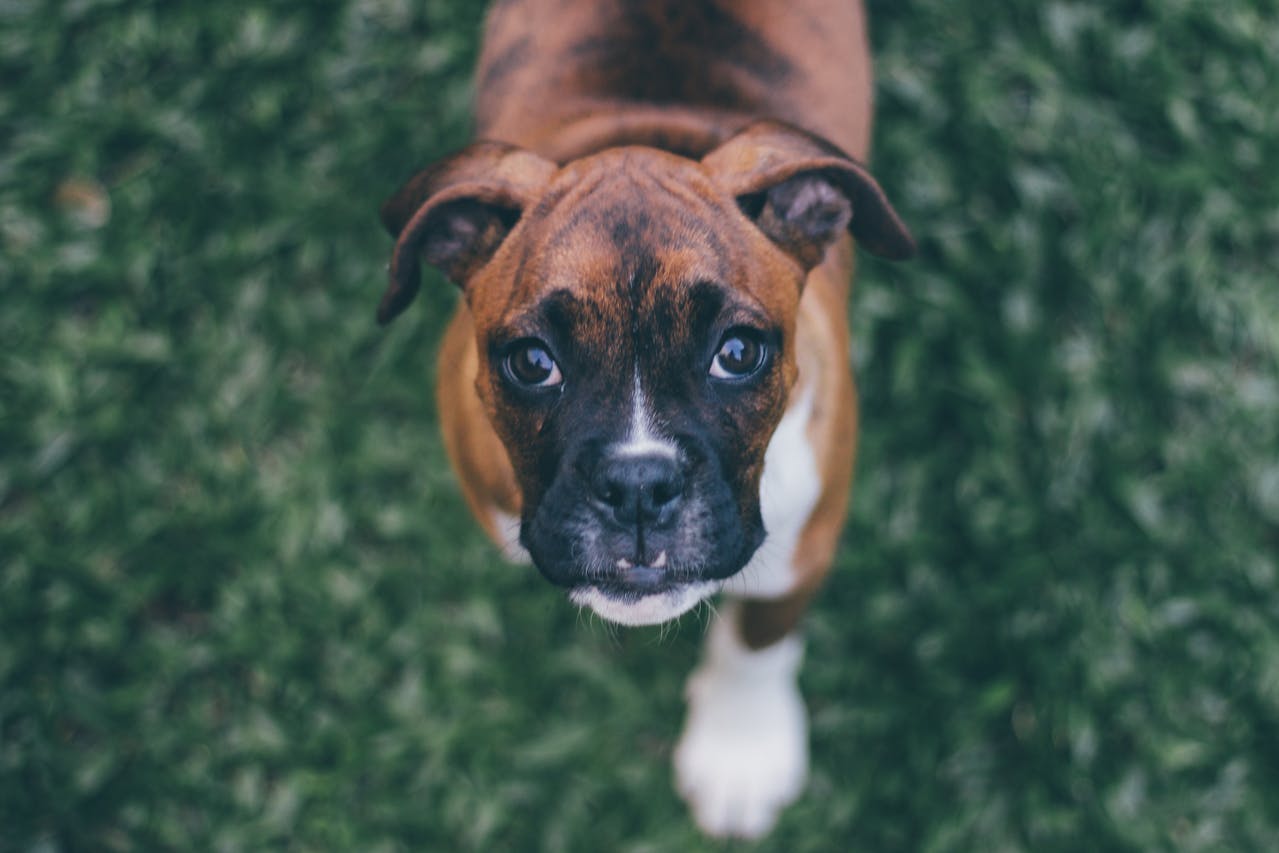How To Train A Boxer Dog
So, you’ve welcomed a Boxer into your life? Congratulations! You’re in for a whirlwind of energy, affection, and a whole lot of slobber.
Boxers are known for their playful nature and boundless enthusiasm, but training one? Let’s just say it’s a bit like trying to herd cats…with a bounce in their step.
But don’t worry, I’ve been there, and I’m here to help you navigate the wild ride of Boxer training.
Boxers: The Clowns of the Dog World (But Don’t Let That Fool You)

Boxers are often called the clowns of the dog world, and for good reason. They’re goofy, they’re playful, and they have a knack for making you laugh even on the toughest days. But here’s the thing—Boxers are also incredibly smart.
That goofy exterior hides a dog that’s more than capable of learning anything you throw their way…if you can keep their attention long enough.
🍲 50 Printable Dog Food Recipes Your Pup Will Love
Skip the fillers and preservatives. Make healthy, homemade meals your dog will actually eat — using everyday ingredients you already trust. Vet-friendly, budget-friendly, and super easy to follow. 🐾
Perfect for picky eaters, senior dogs, and pups with sensitive stomachs. Make mealtime simple and nutritious again.
Get the Recipes Now 🐶When I first got my Boxer, I thought I was prepared for the energy. Spoiler alert: I was not.
Boxers are like a perpetual motion machine—always on the move, always looking for the next bit of fun. But with that energy comes a need for consistent, patient training. Trust me, it’s worth it.
Setting the Ground Rules: Be the Boss, But Make It Fun
Boxers are strong-willed, but they also crave structure. They need to know who’s in charge (that’s you, by the way), but they also need training to be fun. If they’re not enjoying themselves, good luck getting them to focus.
- Be firm, but fair: Boxers don’t respond well to harsh training methods. Positive reinforcement is your best friend here. They’re eager to please, so reward them when they get it right.
- Mix it up: These dogs get bored easily. If you’re doing the same thing over and over, they’ll lose interest. Keep training sessions varied and engaging to hold their attention.
- Short and sweet: Boxers have a short attention span. Training sessions should be brief—10 to 15 minutes max. Make it fun, make it quick, and end on a high note.

The Basics: Sit, Stay, and (Hopefully) Come
Let’s start with the basics—sit, stay, and come. These commands are essential for any dog, but with a Boxer, they’re particularly important.
Remember, this is a dog that’s full of energy and curiosity. Getting them to listen to you when they’re excited? That’s the challenge.
When I started training my Boxer, the “sit” command was the easiest. She picked it up quickly because it’s straightforward, and there’s a treat involved. “Stay” and “come” were a different story—especially “come.”
Boxers love to explore, and sometimes, they’re just too curious to come back right away.
- Sit: Hold a treat above your Boxer’s nose and move it back over their head. As they follow the treat, their butt will naturally lower to the ground. As soon as they sit, say “sit” and reward them.
- Stay: This one’s a bit tougher. Start with your dog sitting, then hold your hand up like a stop sign and say “stay.” Take a small step back. If they stay put, reward them. If not, start over. Patience is key.
- Come: Use a happy, excited tone when you call your Boxer. Make them want to come to you. When they do, reward them like they’ve just won the lottery. Consistency here is crucial because this command can be a lifesaver in certain situations.

Exercise: Burn Off That Energy!
Here’s something you need to know: a tired Boxer is a good Boxer. These dogs have more energy than they know what to do with, so it’s up to you to help them burn it off.
Trust me, if they don’t get enough exercise, they’ll find their own way to release that energy, and it’s usually not something you’ll be thrilled about.
When I first got my Boxer, I thought a couple of walks a day would be enough. Ha! Boxers need serious exercise—think running, playing fetch, or even agility training.
- Daily walks: Long walks are a must, but they need more than just walking. Incorporate some running or off-leash time if possible.
- Playtime: Boxers love to play, so make sure you’re spending time each day playing with them. Fetch, tug-of-war, or even just running around the yard can do wonders for their energy levels.
- Mental exercise: Don’t forget about their brains! Puzzle toys, training games, and new tricks are great ways to keep their minds engaged.
Socialization: Start Early and Be Consistent
Boxers are naturally friendly, but proper socialization is still crucial. You want to make sure your Boxer is comfortable around other dogs, people, and in different environments. The more you expose them to early on, the more well-rounded they’ll be as adults.
When I got my Boxer, I made it a priority to socialize her as much as possible. We went to puppy classes, visited dog parks, and took trips to the pet store. It made a huge difference in how she behaved around new people and dogs.
- Puppy classes: These are a great way to start socializing your Boxer in a controlled environment. Plus, it’s a good opportunity for you to pick up some training tips as well.
- Dog parks: Once your Boxer is fully vaccinated, take them to a dog park. It’s a great way for them to interact with other dogs and learn how to behave in a group setting.
- Expose them to different environments: Take your Boxer to as many new places as possible. The more they experience, the more adaptable they’ll be.
Patience and Persistence: Stick With It
Training a Boxer isn’t a sprint; it’s a marathon. There will be days when you feel like you’re not making any progress.

Don’t get discouraged—consistency and patience are your best tools. Boxers are smart, but they can be a bit stubborn. Keep at it, and you’ll start to see results.
When I was training my Boxer, there were definitely moments of frustration. But over time, the consistency paid off. She started to listen more, and the bond we built through training was worth all the effort.
- Stay positive: Boxers respond to your energy. If you’re frustrated, they’ll sense it. Keep training sessions upbeat and positive.
- Be consistent: Stick to your training routine. If you let your Boxer get away with something once, they’ll try it again. Set the rules and enforce them consistently.
- Celebrate the wins: Training a Boxer is hard work, so make sure you celebrate the small victories. When they finally nail a command, give yourself (and your dog) a big pat on the back.
Final Thoughts: Enjoy the Ride
Training a Boxer is a journey. It’s not always easy, but it’s definitely worth it. Boxers are loyal, loving, and incredibly fun dogs. The time and effort you put into training them will pay off in spades as you build a strong bond with your pup.
So, get out there, have some fun with your Boxer, and remember—training is as much about building a relationship as it is about teaching commands. Enjoy every step of the process, and don’t forget to laugh along the way.
Good luck, and happy training! 🐾

I’ve spent 10+ years in dog training, digging into what makes dogs (and their humans) tick. At Smart Dog Learning, I share my no-nonsense, fun approach to training so you can enjoy life with a well-behaved, happy pup—no boring lectures, just practical results 😉





